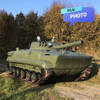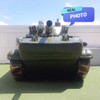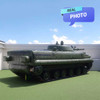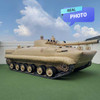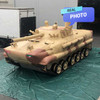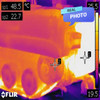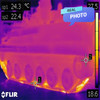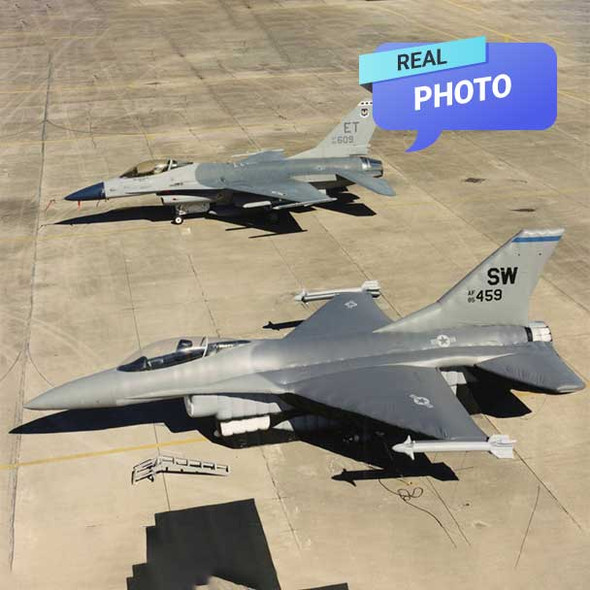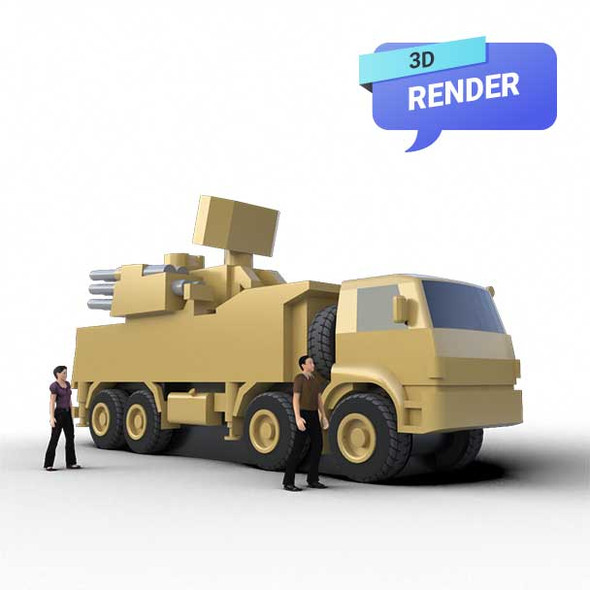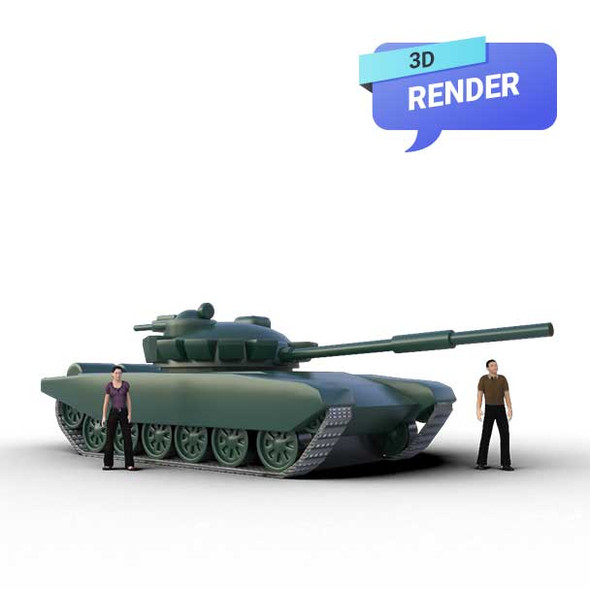Description
Elevate Your Collection: The BMP-3 - A Captivating Dummy Tank
In the realm of military replicas, the BMP-3 Inflatable Tank takes center stage, offering military a unique opportunity to develop trainig and combat. Positioning itself as a versatile and visually striking dummy tank, this inflatable marvel redefines the notion of a combat
Invest in the future of military readiness with i2k's BMP-3 Inflatable Tank. Our Inflatable dummy tank is not just a training tool; it's a force multiplier, giving your troops the edge they need in an ever-evolving world of challenges.
Description BMP-3 Inflatable Tank
- 1:1 Ratio Inflatable Decoy/Target
- Thermal Signature: Engine compartment & tank tracks
- RTE: Radar Target Enhancers
- Underlayment of foil/fabric under exterior vinyl skin
- External Details: Custom PMS vinyl and full digital printed 3D tracks
- Temperature Allowances: -30 to +150 Degrees Fahrenheit (-20 to +60 Degree Celsius)
- Wind Capability: Able to withstand 35mph winds
- Inflation Time: Average of 20-30 minutes
- Continuous air flow needed (Must use electricity or a
- Gasoline/diesel generator)
- Storage Area 1.25x1.75x2m (inflatable & blowers)
- Gross Weight 250lbs (105 kilos)
- Inflation Motor Type 120v/230v blower
- Petrol/Diesel generator/blower(s) optional
- Dimension:
- Length: Approximately 7.14 meters (23 feet and 5 inches)
- Width: Approximately 3.2 meters (10 feet and 6 inches)
- Height: Approximately 2.4 meters (7 feet and 10 inches)
Color Reference
- BMP-3
- Tone camouflage
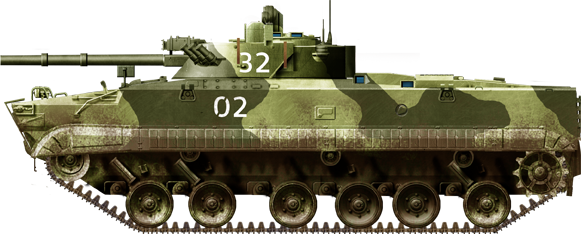
- KFOR

- Russian camouflaged

- UAE ERA

- UAE

- Russian

- South Korean

- 9P157-2 Khrizantema-S version.

- Marinir (Indonesian Marines)

- Russian camouflage
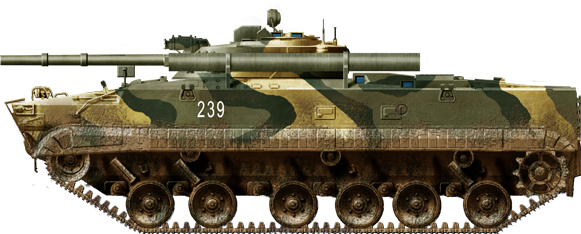
- Cypriot

Packing List
- (1) 1hp blower
- (1) Deluxe repair kit
- (8) 18”x1” ground stakes
- (1) Engine thermal blanket
- (2) Tank Track thermal blankets
- (1) Deluxe repair kit
Add-ons
- 3D-printed guns and accessories
- Portable generator (gasoline or diesel)
- Gasoline-powered inflation blowers
- Collapsible Bulk Container w/lid
- Netting
Advantages of the BMP-3 Inflatable Tank Decoy
- Minimal Maintenance: Unlike real military hardware, inflatable decoys require minimal maintenance and upkeep, saving time and resources.
- Customizable: Decoys can be designed to resemble specific military vehicles accurately, adding to the effectiveness of the deception.
- Training and Exercises: Inflatable decoys are valuable tools for training exercises, allowing military units to practice deception tactics and hone their skills in a controlled environment.
- Psychological Impact: The presence of inflatable decoys can have a psychological impact on enemy forces, causing uncertainty and reducing their confidence in target identification.
- Camouflage and Concealment: When appropriately positioned and disguised, inflatable decoys blend into the environment, making it harder for the enemy to differentiate from real assets.
- Operational Security: The use of decoys can help protect sensitive military assets by drawing attention away from their actual locations.
Instructions
- The Inflatable Target/Decoy may weigh over more than 200-600lbs. (depending on the model), so caution should be exercised when moving/inflating/loading/unloading and handling the equipment. Always use heavy-duty dolly with steel fenders such as Monster Mover to move your Target/Decoy and staff should always wear back support belt.
- Be sure the area that you will be setting up your Target/Decoy is free of all debris including any rocks or sharp objects. Grass or hard ground is fine for set up if there are no rocks, debris, or sharp objects.
- You may opt to lay out a ground tarp to protect the Target/Decoy, but not necessary.
- The inflated Target/Decoy requires clearance from adjacent obstacles is a minimum 5’ (1.5m) around and above the perimeter of the Target/Decoy with an additional 15’ (4.5m) clearance from utility lines.
- Unroll the Target/Decoy and lay flat in the desired direction/orientation.
- Tie off any unused blower tubes and be sure that all zippers/flaps are closed.
- The Target/Decoy is to be anchored by a minimum (6)18" x 12” ground stakes at 85% depth. Anchoring should be applied at a 90 degrees angle (i.e., perpendicular)
- If anchoring on a hard surface such as asphalt or cement, a minimum of 80lb sand or water bags should be required per anchor location. Aircrafts can be anchored to tie-down rings.
- Connect inflation blower to the air tube using strap attached and close off the additional air tubes by twisting the tube several times and fold it over and secure snugly with attached strap.
- Now you can install your heat signature radiant blankets (if it wasn’t installed from the factory). Locate the velcro flaps to attach the thermal blanket(s). (Note: tanks will have thermal blankets in the engine compartment and both tracks. Other vehicles will have thermal blankets in the engine compartment and generators.
- Plug your inflation blower(s) into the closest properly grounded (GFCI) 110v or 220v (depending on your power source/Country) outlet or gasoline/diesel generator.
FAQs
Q: How long does it take to inflate the decoy?
A: Unrolling, inflating the decoy and inserting the PVC cannon tube typically takes around 20-30 minutes.
Q: Does the inflatable decoy require a power source?
A: Yes, the inflatable decoy needs to be inflated using 110v or 230v inflation blowers.
Q: Does the inflatable decoy require a constant power source?
A: Yes, the tank is a "constant-air" inflatable decoy that must always remain inflated with 110v or 230v blowers. (Note: Ask about new developments with a new proprietary version of a "sealed-air" model.)
Q: How long does it stay inflated?
A: The decoy can stay inflated for several days, weeks, or even months, depending on weather conditions and usage. The sealed-air version may require a top-off of air every week to maintain full inflation.
Q: What materials are used to make the decoy, and how durable is it?
A: The decoy is made of durable, lightweight PVC-coated nylon with UV inhibitors, designed to withstand rough handling and extreme weather conditions.
Q: Can the decoy be customized to match specific variations?
A: Yes, the decoy can be customized with specific colors, textures, and the option to add camouflage netting.
Q: How much does the decoy weigh, and how easy is it to transport?
A: The weight of the deflated decoy varies depending on the size and configuration, ranging from approximately 200lbs to 275lbs.(90/kg-125/kg). It can be handled by 2 crew members and transported in a standard pickup truck or small trailer.
Q: Can the decoy be reused or is it a one-time use item?
A: The decoy is designed for long-term use and can be utilized multiple times for over 5+ years with proper care and maintenance.
Q: Is the decoy suitable for use in all weather conditions?
A: Yes, the decoy is suitable for most weather conditions, although extreme conditions such as heavy snow may impact its performance.
Q: How do you move or transport the inflatable decoy?
A: A standard inflatable tank decoy is packed in a heavy-duty storage bag and can be unloaded by 2 crew members from a pickup truck or a small trailer. If the tank is packed in an optional collapsible container, it will require more crew members or a forklift or small crane to unload.
Q: Can the decoy be packed up wet?
A: The decoy can be packed while wet, but it is recommended to unroll and inflate it for complete drying before long-term storage. Proper maintenance and protection from moisture are essential to prevent mold, mildew, and rotting.
Q: Can the decoy be used for non-military purposes?
A: While primarily designed for military use, the decoy can also be employed for training exercises, movie productions, and even advertising purposes with 1/2 scale models available upon request.
Q: What is the cost of the decoy and where can it be purchased?
A: The cost of the decoy varies depending on the size and configuration and can be purchased directly from i2k or authorized international partners.
Revolutionizing Armored Warfare: The Evolution of the BMP-3 Tank
The BMP-3 is a Russian amphibious infantry fighting vehicle (IFV) that was first introduced in 1987. It was designed as a successor to the BMP-1 and BMP-2 IFVs and it was intended to provide Russian troops with enhanced firepower, mobility, and protection.
Over the years, the BMP-3 has undergone several upgrades and modifications, including the addition of new armor and electronics systems. Despite its advanced features and capabilities, the BMP-3 has faced criticism for its high cost and complexity, as well as its relatively poor performance in certain terrain conditions. Nonetheless, it remains a significant asset in the Russian military's arsenal and continues to see use in various combat situations.
Advantages of the BMP-3 Inflatable Tank
- Fire Control System: The tank is equipped with advanced fire control systems, including laser rangefinders and thermal imaging, enhancing its accuracy and target acquisition capabilities.
- Active Protection Systems: Some BMP-3 variants are equipped with active protection systems, which can detect and intercept incoming anti-tank missiles, improving the tank's survivability on the battlefield.
- NBC Protection: The BMP-3 is equipped with Nuclear, Biological, and Chemical (NBC) protection systems, providing safety for the crew in hazardous environments.
- Low Silhouette: The tank has a relatively low profile, making it harder to detect and target, especially when operating in urban or forested areas.






















